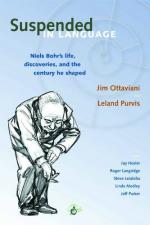|
This section contains 2,477 words (approx. 9 pages at 300 words per page) |

|
Quantum physics is often credited with far-reaching metaphysical and epistemological implications, including the denial of causality and determinism and the existence of strict limits on what can be known about natural systems. One of the main figures whose work has been used—and often misused—in support of such conclusions is the Danish physicist Niels Bohr. Bohr is rightfully viewed as one of the major figures in the history of quantum physics and is widely known both for his extraordinary contributions to the development of quantum theory and for his philosophically oriented work, which focused on the task of interpreting the quantum mechanics. Bohr's interpretation centers on his notion of complementarity, which he developed in 1927, two years after the development of quantum mechanics by Heisenberg, Born, Jordan, and Schrödinger and shortly after the publication of Heisenberg's famous uncertainty paper.
Bohr's interpretive approach attracted...
|
This section contains 2,477 words (approx. 9 pages at 300 words per page) |

|


